You may know him as Takeshi Kitano or Beat Takeshi. You might have seen him in Battle Royale or Ghost in the Shell. You might have watched the Japanese game show he hosted. You may have even played his video game. Kitano has done a little bit of everything. And he made it all look so cool. But how did this one man become so prolific?
Early and Comedic Beginnings
Kitano’s iconography can be traced back to his childhood. He grew up in the working-class part of Tokyo known as Adachi. There were two types of idols Kitano had during the time: baseball players and the yakuza. Since there were more professional yakuza than professional baseball players in his neighborhood, the life of a gangster seemed more attainable.
But it wasn’t crime that was in Kitano’s future. It was comedy. After dropping out of college at 19, he aimed to become a comedian. This was the early 70s.
After several odd jobs, including a lift operator at a strip club, he met fellow comedian Nirō Kaneko. The two joined forces and decided to choose stage names for their comedy. They formed a team called Two Beats. So Takeshi Kitano and Nirō Kaneko became Beat Takeshi and Beat Kaneko.
WATCH: How Takeshi Kitano Reinvented Cool
For the 1970s Japanese comedy scene, the Beat brothers pushed the envelope with their humor. While comedy duos were not uncommon for the era, they were not as provocative and controversial as Two Beats. The bulk of that material came from Kitano himself. His jokes often involved mocking the elderly, ridiculing the poor, and exposing himself. His comedy pushed so many buttons, especially on television. One performance on NHK where Kitano exposed himself got him banned from the studio for five years.
Kitano’s comedy had flourished, but he decided to take a different direction. During the 1980s, he broke things off with Kaneko to fly solo. It turned out Kitano had the chops to sling jokes with the best of the best. Throughout the 80s, he was considered one of the top TV comedians.
Becoming an Actor

Kitano’s grander ambitions of becoming an actor came about with the 1983 film, Merry Christmas, Mr. Lawrence. Set during World War 2, Kitano would play a gruff prisoner-of-war camp sergeant. This was a pretty big role considering he’d be working with legendary director Nagisa Ōshima. He also had the pleasure of being cast in a film alongside David Bowie. Yes, THAT David Bowie.
Kitano’s role was a real change of pace because there was nothing comedic about it. He’d have to play a serious, intimidating figure, leaving no room for his usual brand of absurd comedy. While filming, Kitano thought he came across as serious. When he watched the film in a theater, not so much. He took note of how the audience still laughed anytime Kitano popped on the screen. They just couldn’t stop thinking about the actor’s previous work as a comedian.
A lesser man might have taken the film as a sign to call it quits with the serious. But this is Kitano we’re talking here. He knew he didn’t become a comedian overnight. It’d take more than one film to make him a star. Little did Kitano know, however, that he wasn’t just bound to become an actor. He was going to be a director. Before that, however, he had his own castle. Well, on television at least.
The Man in the Wild Castle
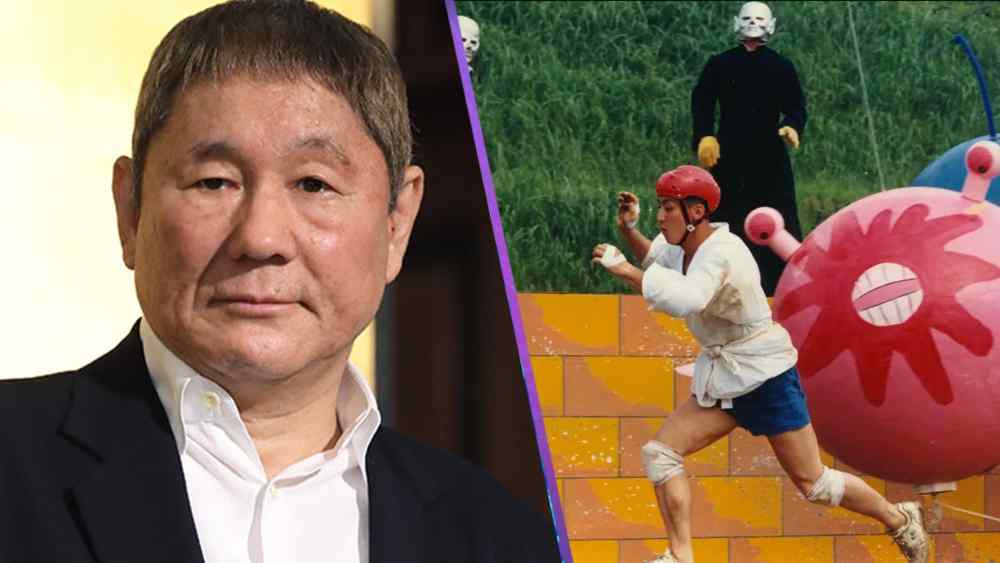
Prior to his bigger break in movies, Kitano hosted the game show Takeshi’s Castle in 1986. And by game show, we mean a themed physical challenge contest. Yes, long before the days of Wipeout and American Ninja, there was Takeshi’s Castle.
The slapstick competition would eventually be broadcast in America during the 2000s. This version, however, was heavily butchered and retitled “Most Extreme Challenge.” The show was heavily edited and given a mocking English dub that was 100% unfaithful to the original.
And this was after two previous attempts to air the show as King of the Mountain and Storm the Castle.
Why did American TV networks keep trying to localize Takeshi’s Castle? Well, because it was massively popular. It ran for 133 episodes between 1986 and 1990. The show’s popularity can be traced to the reality TV of today. Recently, the show was revived in 2023, with Beat Takeshi himself returning to oversee the chaos. Between the original and revival, however, is where Beat Takeshi truly became cool.
A Violent Beginning
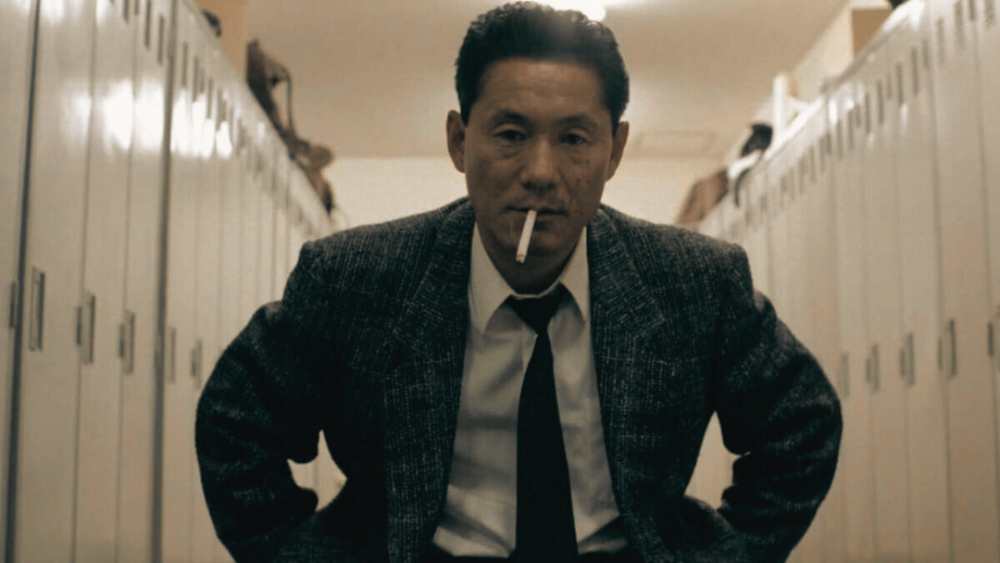
Kitano’s biggest break in movies came with the 1989 film, Violent Cop. It was supposed to be directed by Kinji Fukasaku, but he ultimately declined to direct due to scheduling. This was Kitano’s time to shine as a director. There’s been speculation Violent Cop was originally intended to be a comedy. That might explain why Kitano was not only allowed to direct, but even pen the script with an uncredited rewrite.
Violent Cop was a huge change of pace for Kitano. He played the quietly sinister detective Azuma. As Azuma investigates drug dealing among the yakuza, he becomes highly unprofessional. He gets very violent as the title implies.
Kitano’s performance was subdued. Audiences didn’t think of the comedian as a funny guy trying to act cool. This was the start of not only Kitano’s filmmaking career, but also his legacy of cool.
Related: Why Director Seijun Suzuki Was Fired
After debuting with Violent Cop, Kitano directed 1990s Boiling Point, a film that combined the two things he idolized most in youth. The story is about baseball players trying to defend themselves from the yakuza. Kitano took the big role of the yakuza member Uehara, seeking revenge through the baseball team. Boiling Point was the first film for which Kitano received a screenplay credit. His talents would also expand to editing with his next film, the 1991 drama A Scene at the Sea.
But it was 1993’s Sonatine where Kitano became more internationally recognized. He once again played a yakuza, but a different kind of enforcer. His character Murakawa was so weary from the life of killing that he had dreams of dying. He’s counting on dying in his line of work and hopes it’s soon.
This leads to Kitano’s character coldly progressing through shootouts and deals gone wrong. It’s only when he’s hanging out with his cohorts on the beach where a smile graces his face. But when firing guns and watching people die? There’s not a trace of a grin. It was a contemplative, cathartic crime film, backed up with Joe Hisaishi’s soundtrack. Yes, the guy who scored all those beloved Studio Ghibli films.
Sonatine followed a similar path of Japanese directors becoming wildly noticed. The film was considered too Japanese to appeal to an international market, especially for being a commercial failure in Japan. Then it went overseas and all the naysayers were proved wrong. Kitano became an international sensation where his previous films became more notable abroad. Kitano’s cool was so universal that his acting would extend outside of Japan.
Kitano Abroad
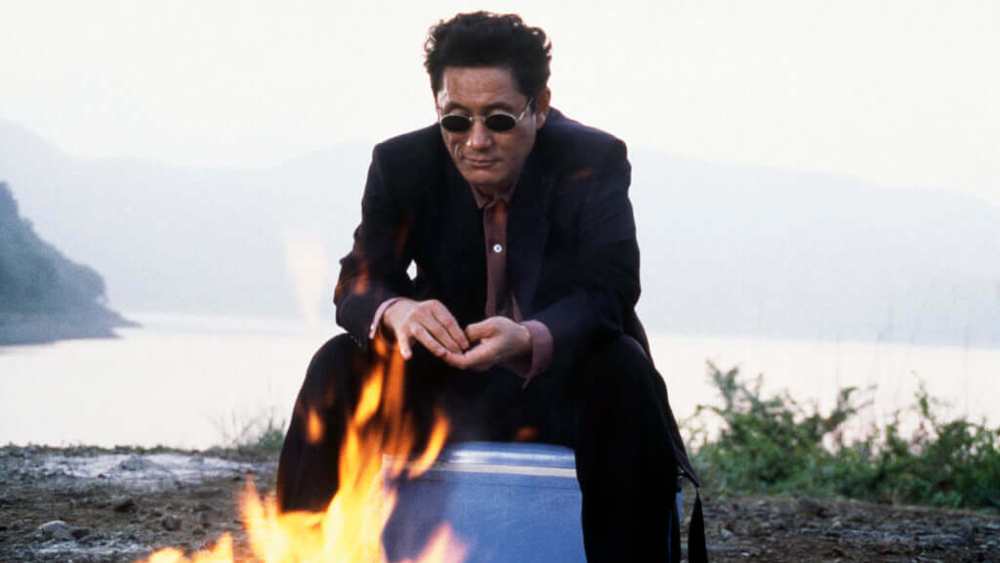
It didn’t take long for Takeshi Kitano to appear in American films. In 1995, he featured in the sci-fi thriller Johnny Mnemonic playing, you guessed it, a yakuza. Kitano also started directing projects outside of Japan. He developed another yakuza film in 2000 called Brother. The premise is interesting because Kitano played a yakuza who moves to Los Angeles after his gang is disbanded in Japan. In LA, he teams up with his half-brother and local gangs. “Interesting” because Kitano’s film career took the opposite route.
After the poor experience with Brother, Kitano vowed to stop working outside Japan. His international projects weren’t faring well and it was clear Kitano was more at home in Japan. Thankfully, he didn’t burn that bridge. He continued directing and acting in several Japanese films amid his few years trying to break into American films. Some of his notable Japanese films during the late-90s included Hana-bi and Kikujiro. And he hadn’t even hit his peak yet as a Japanese actor and filmmaker.
An Older Cool
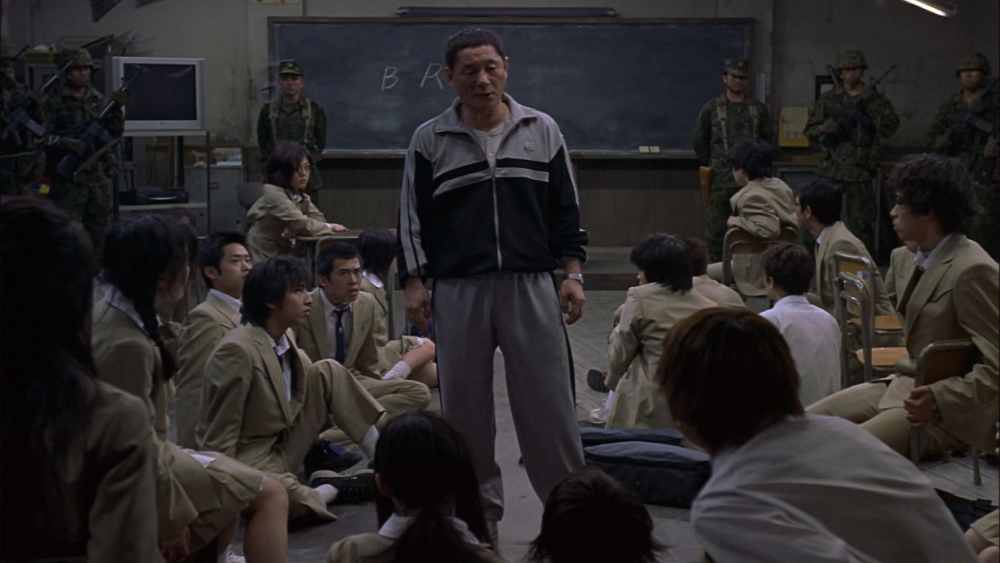
While Kitano had graced a few American films, his next major Japanese role was for a film America wouldn’t see for years. Legally, that is. He dominated his role as the violent teacher of Battle Royale. The teacher was fittingly named Kitano because this role is 100% in his wheelhouse. Kitano watches over a battle to the death as students fight for survival on an island. He walks the perfect line between being an intimidating authority figure and an absurd individual. He comes back from the dead in this film briefly to answer the phone and have a cookie before dying.
Since the violence in the film was so controversial, Battle Royale was condemned by US test audiences and wasn’t released on home video until years later. That said, the film was widely bootlegged and nearly every high school and college student of the 2000s had seen the film before the decade’s end. Put simply, Kitano was the driving force behind one of the coolest and most controversial films from Japan.
It was during the first decade of the 21st century that Takeshi also became more aware of his cool status. This led to his 2005 semi-biographical film, Takeshis‘ where Kitano plays two versions of himself – one is a successful actor, the other a struggling actor. It’s a tale about Kitano confronting himself.
As a deeply personal project, Takeshi’s surreal semi-biography could be seen as trendsetter. 2010 saw many actors developing films where they confronted a version of themselves. Chris Rock in Top Five, Burt Reynolds in The Last Movie Star, and Sam Elliot in The Hero. But while all those films were fairly grounded, Takeshi’s film was highly cerebral. It indulges in the fantasies of the actor and ponders deeper questions of fame. This era also helped ground Kitano in more diverse movies with drama and comedy. Such films include Kikujiro, Dolls, Zatoichi, Achilles and the Tortoise.
Pulled Back In

But Takeshis’ was not the twilight of Kitano’s career. He still had plenty of films left in him. He soon developed a trilogy of yakuza films – the Outrage trilogy. In the 2010 film Outrage, Kitano played Otomo, a yakuza leader wrapped up in a world of violence. Although Otomo was implied to be dead, he managed to return for the sequel, in Beyond Outrage in 2012. The story would reach its conclusion with 2017’s Outrage Coda.
Kitano retained much of his cool from his past yakuza films, but to a different degree. He was tired of constantly being known as an actor associated with violence. This led to the final Outrage film having a little more heart while still pushing the envelope for a crime thriller. Keep in mind that yakuza films had dwindled in popularity by the 2010s. So all of Kitano’s efforts with the Outrage trilogy, including writing and directing each entry, was a labor of love.
Versatility
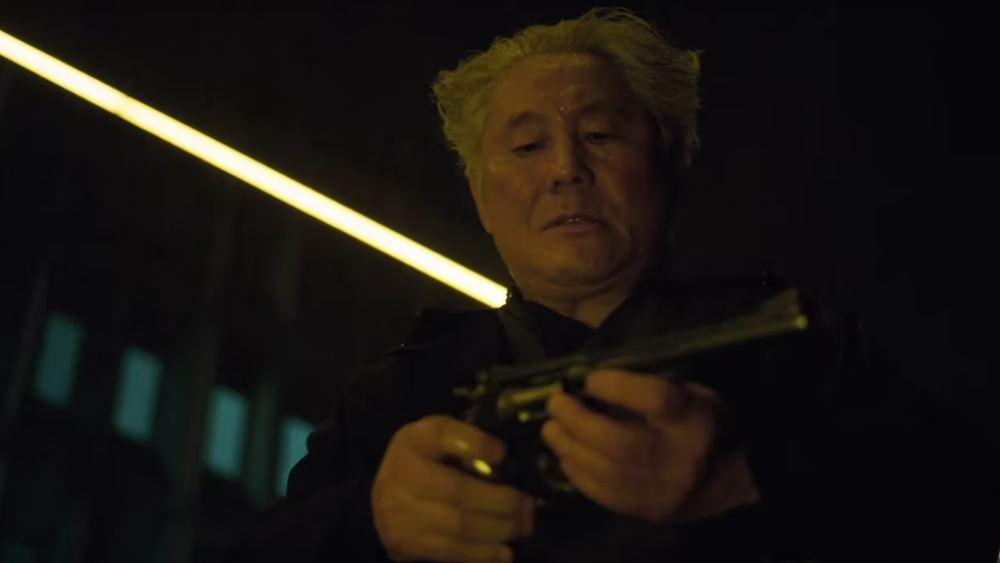
What makes Takeshi Kitano so cool is the attitude he brings to his versatility. He’s not known simply for his violent roles, nor his comedic background. He doesn’t write or direct any one type of genre. He’s made everything from touching dramas like 2002’s Dolls to samurai epics like 2023’s Kubi.
But perhaps the prominent display of Kitano’s cool was his supporting role in 2017’s Ghost in the Shell. As a Hollywood live-action remake of the classic anime, Kitano is the only notable Japanese name in the cast, playing Police Chief Daisuke Aramaki. In a diverse cast who mostly speaks English, Kitano only speaks in Japanese. It could be because Kitano had trouble adapting to American productions, but that badass nature comes through more easily when speaking in his first language. That moment when he mutters a punchline right before blowing a guy’s brains out…
That’s a “cool” you can’t manufacture. That’s the kind of cool that only comes with years of experience as an actor, comedian, writer, and director. That’s Kitano cool.
What are your thoughts on Takeshi Kitano? Or do you prefer Beat Takeshi? Let’s talk in the comments below. And don’t forget to like and subscribe to Flickside for more great film content.

